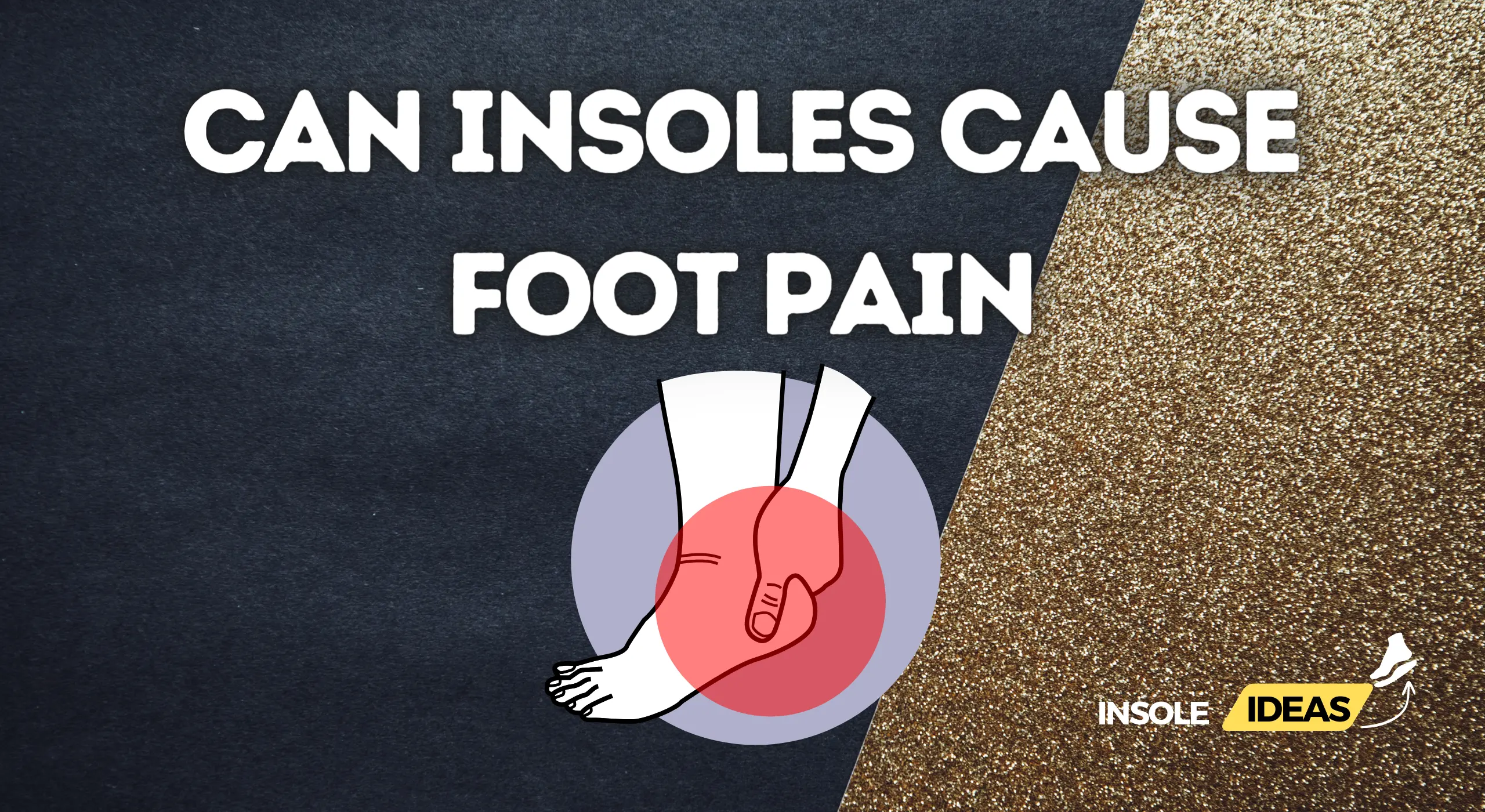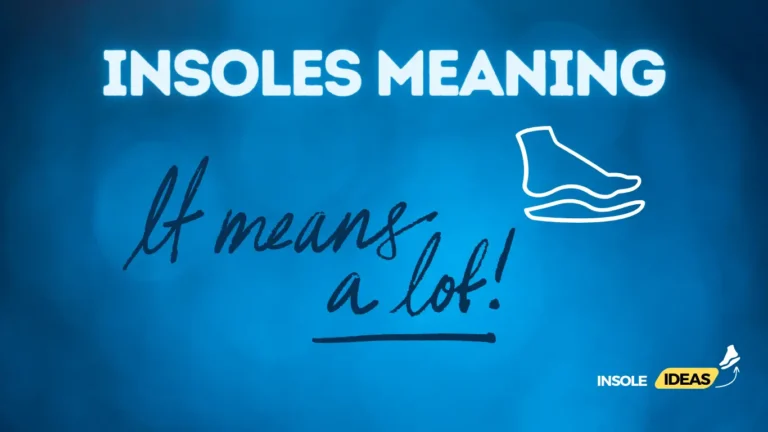Exploring Foot Pain Caused by Insoles: Understanding, Prevention, and Management
Explanation of the Role of Insoles in Footwear
Insoles, also called footbeds or shoe inserts, are inserts placed inside shoes to provide additional support, cushioning, and foot comfort. They can help improve the fit of shoes, alleviate foot discomfort, and address various foot conditions. Insoles come in different materials and designs to cater to different foot types and needs.
Overview of Foot Pain and Its Potential Causes
Foot pain is a common complaint resulting from various factors, including injury, overuse, structural abnormalities, and medical conditions. It can affect any part of the foot, including the toes, arches, heels, and balls of the feet. Understanding the potential causes of foot pain is essential for effective management and treatment.
Factors Contributing to Foot Pain from Insoles
Poorly Fitting Insoles
Poorly fitting insoles can contribute to foot pain by causing pressure points, friction, and discomfort. If the insoles are too small, too large, or not contoured to the shape of the foot, they may create areas of excessive pressure or rubbing against the feet, leading to pain and irritation.
Incorrect Arch Support
To preserve appropriate foot alignment and minimise strain on the muscles and ligaments of the feet. Insoles with inadequate or incorrect arch support can result in excessive flattening or overloading of the arches, leading to conditions such as plantar fasciitis, arch pain, or overpronation.
Inappropriate Material or Cushioning
The material and cushioning of insoles play a significant role in their comfort and effectiveness. Insoles made from rigid or hard materials may not provide adequate shock absorption or cushioning, leading to discomfort and foot fatigue. On the other hand, insoles with overly soft or compressible materials may lack sufficient support and stability, contributing to foot pain and instability.
Overuse or Sudden Increase in Activity
Overuse of insoles or sudden increase in activity levels can also lead to foot pain. Introducing insoles too quickly or using them for prolonged periods without proper adjustment and acclimatisation can cause muscle fatigue, strain, and discomfort. Furthermore, abrupt spikes in activity levels, such as starting a new exercise routine or wearing insoles during intense physical activity, can put excessive stress on the feet and result in pain or injury.
Common Types of Foot Pain Caused by Insoles
Arch Pain
Arch pain, also known as arch strain or arch discomfort, is a common type of foot pain caused by insoles. If the insoles lack proper arch support or if the support is incorrectly positioned, it can lead to excessive strain on the arches of the feet. Pain, stiffness, and inflammation may follow along the arch area.
Heel Pain (e.g., Plantar Fasciitis)
Heel pain, particularly plantar fasciitis, is another everyday foot condition insoles can exacerbate. Plantar fasciitis is characterised by an inflammation of the thick tissue band that runs along the foot’s base, known as the plantar fascia. Insoles with inadequate heel support or cushioning may fail to properly support the arch and heel, putting more pressure on the plantar fascia and worsening heel pain symptoms.
Ball of the Foot Pain (e.g., Metatarsalgia)
Metatarsalgia is characterised by pain and inflammation in the ball of the foot, particularly under the metatarsal heads. Insoles that lack sufficient cushioning or fail to distribute pressure evenly across the foot can contribute to metatarsalgia. High-impact activities or wearing insoles with inadequate forefoot padding can exacerbate pressure on the ball of the foot, leading to pain and discomfort.
General Discomfort or Soreness
General discomfort or soreness in the feet is a common complaint associated with wearing insoles. This may manifest as aching, throbbing, or fatigue in the feet, particularly after prolonged standing or walking. Insoles that do not adequately conform to the foot’s shape, provide adequate support, or offer sufficient cushioning can contribute to discomfort and soreness.
Potential Risks and Complications
Aggravation of Existing Foot Conditions
Insoles must address underlying foot issues or provide appropriate support to improve existing foot conditions. For example, individuals with flat feet may experience increased pronation and arch collapse if the insoles lack proper arch support, worsening symptoms such as arch pain or heel pain.
Development of New Foot Issues
Inadequate or improper use of insoles can also lead to the development of new foot issues. For instance, wearing insoles with excessive arch support or cushioning may alter foot biomechanics and gait patterns, potentially leading to problems such as overpronation, supination, or stress fractures.
Impact on Gait and Biomechanics
Ill-fitting or poorly designed insoles can negatively affect gait and biomechanics, leading to altered foot movement patterns and increased risk of injury. Insoles that are too rigid or too flexible may interfere with the natural motion of the feet, resulting in inefficient gait mechanics and potentially putting stress on the ligaments, tendons, and muscles of the feet and lower limbs.
Prevention and Mitigation Strategies
Properly Fitting Insoles
Ensuring that insoles fit correctly is crucial for preventing foot pain and discomfort. Insoles should match the size and shape of your shoes, providing adequate coverage and support from heel to toe. When selecting insoles, choosing the correct size based on your shoe size and trimming them if necessary to achieve a precise fit is essential. Avoid using too large or too small insoles, as they can create pressure points and contribute to foot pain.
Choosing the Correct Type of Insoles for Specific Foot Needs
Selecting the correct type of insoles for your specific foot needs is essential for preventing foot pain and addressing any existing issues. Consider factors such as arch height, foot shape, and any current foot conditions when choosing insoles. For example, individuals with high arches may benefit from insoles with additional arch support, while those with flat feet may require more cushioning and stability insoles. Consulting with a healthcare professional or podiatrist can help determine the most suitable insoles for your feet.
Gradual Adjustment Period
When introducing new insoles, allowing your feet time to adjust gradually is essential. Start by wearing the insoles for short periods, such as a few hours a day, and gradually increase the wearing time as your feet become accustomed to the new support. This gradual adjustment period allows your feet to adapt to the insoles’ changes in support and cushioning, reducing the risk of discomfort or pain.
Regular Foot Care and Monitoring
Consistent foot care and observation are necessary to prevent foot pain and detect issues early. Inspect your feet regularly for signs of redness, swelling, or irritation, especially after wearing insoles for extended periods. If you experience discomfort or pain while wearing insoles, discontinue use immediately and consult a healthcare professional or podiatrist for further evaluation and guidance. Also, maintain good foot hygiene, trim your toenails, and moisturise your feet regularly to keep them healthy and comfortable.
- Ensure the insoles are correctly sized and fit snugly inside your shoes to avoid slipping or moving.
- Choose insoles that provide sufficient arch support, keep your feet properly aligned, and avoid overpronating or supinating.
- Consider the materials used to construct the insoles, opting for adequate cushioning and support for your specific needs.
- Introduce the insoles gradually, wearing them for short periods initially and progressively increasing the duration to allow your feet to adjust to the new support.
- Monitor your feet for discomfort or pain while wearing the insoles, and make adjustments as needed to ensure optimal comfort and support.
Conclusion
Summary of Potential Factors Contributing to Foot Pain from Insoles
Foot pain caused by insoles can result from various factors, including poorly fitting insoles, inadequate arch support, inappropriate materials, and overuse. These factors can lead to discomfort, soreness, and even worsening existing foot conditions such as heel, ball of foot, and arch discomfort.
Importance of Proper Selection, Fit, and Monitoring of Insoles
Selecting the right insoles and ensuring proper fit are essential to preventing foot pain and discomfort. Properly fitting insoles that provide adequate support, cushioning, and alignment can help alleviate pressure points, reduce strain on the feet, and promote overall foot health. Regular monitoring of insoles for signs of wear and discomfort is also crucial for maintaining foot comfort and preventing potential issues.
Emphasis on Proactive Measures for Preventing and Addressing Foot Pain Caused by Insoles
Taking proactive measures to prevent and address foot pain caused by insoles is critical to maintaining foot health and comfort. This includes choosing insoles with care, ensuring proper fit, gradually adjusting to wearing them and monitoring for any signs of discomfort or pain. By being proactive, individuals can minimise the risk of foot pain and enjoy improved comfort and support from their insoles.
In summary, foot pain caused by insoles can be effectively managed through proper selection, fit, and monitoring of insoles, along with proactive measures to prevent and address any discomfort or issues that may arise. By paying attention to these factors and ensuring their insoles’ optimal fit and support, individuals can experience enhanced foot comfort and overall well-being.



